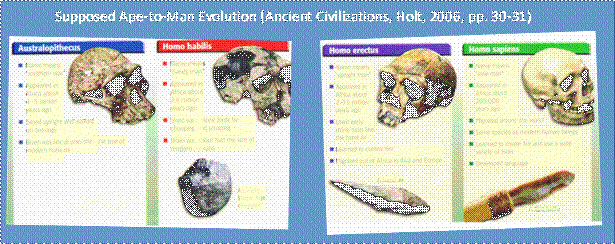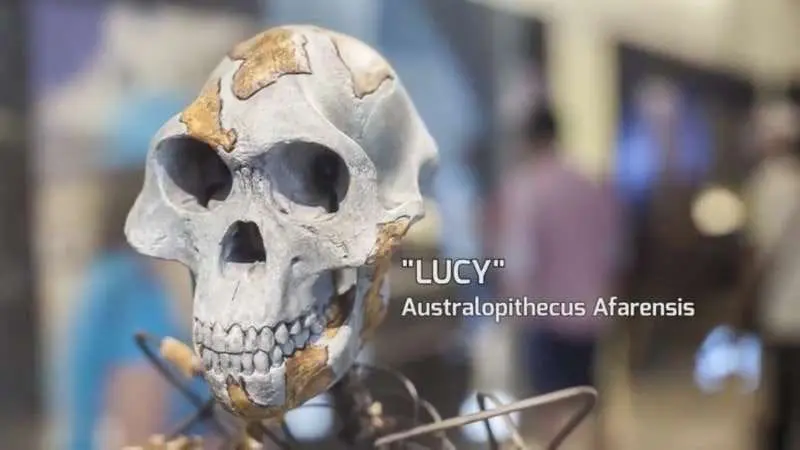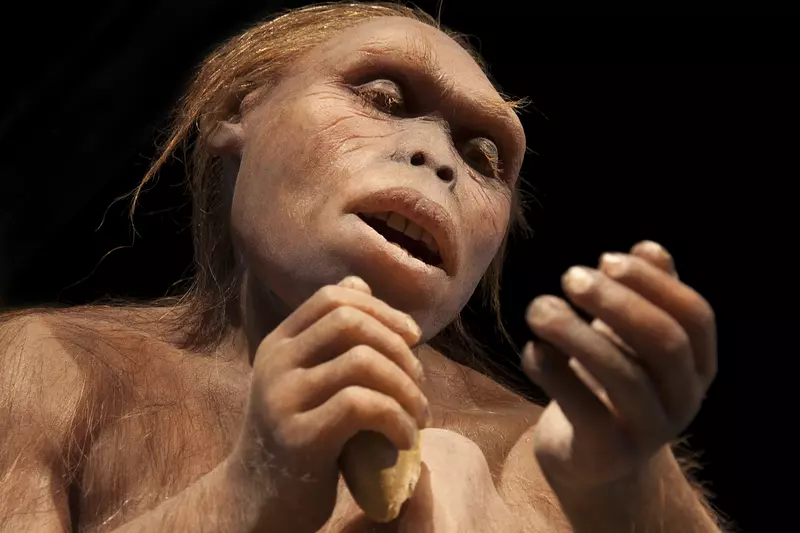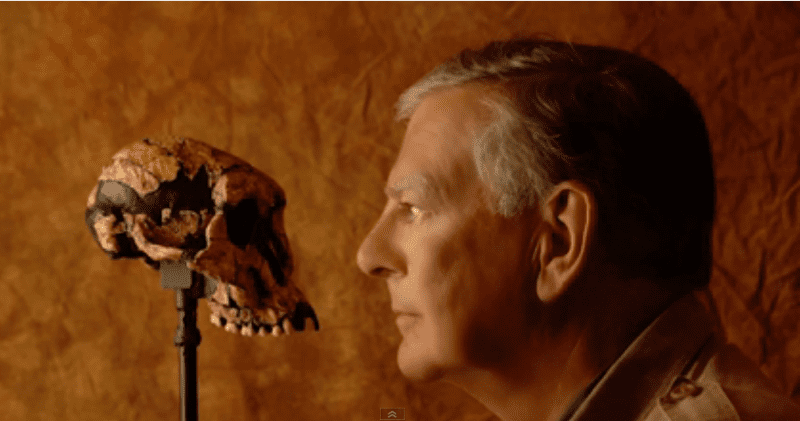[Originally published as Jr. High Social Studies, Folsom, CA Edition]
Evolution Topics Covered in These Textbooks:
These books are typically used in the 6th grade in California schools, and teach in the opening chapters (Prentice Hall, pp. 6-28, 2006 and Holt, pages 24-35, 2006) that humans evolved from ape-like creatures starting about 200,000 years ago.

Biblical Responses Based on Creation Science
Overview:
Most junior and senior high school textbooks teach that humans evolved from ape-like creatures. This is very different than what the Bible teaches. According to the Bible (in the very first chapter of the first book—Genesis 1), both apes and humans were created on the Sixth Day of creation, but they were created as very different types of beings.
For starters, only humans were created in the image of God (Genesis 1:26-27). Jesus confirmed that humans were in fact created at the beginning of creation (Mark 10:6: “But at the beginning of creation God ‘made them male and female’”), not long ages after creation was completed. In fact, humans were the very last of God’s creations, and we were created to rule over the earth and all other animals that God created. Eve was created by God to be a perfect mate for Adam’s—filling in all the areas that Adam lacked as a man. Only together do they form “man” in the well-rounded way that God wanted us to be. Eve was also given place as the “mother of all the living” (Genesis 3:20).
Other parts of the Bible even confirm that mankind is the most special of all God’s creations. For example, 1 Corinthians 15:39 says, “All flesh is not the same flesh, but there is one flesh of men, and another flesh of beasts, and another flesh of birds, and another of fish.” Because humans are made in God’s image, were God’s last and final creation, and put in charge over all of His creation, it would make sense that humans today (and at the beginning) would be designed much differently than all other living things.
It would only make sense that we would live longer than most, be smarter, and able to plan ahead. Humans do lots of things that apes cannot. Just a starter list includes advanced speech, math, singing, worship, prayer, holding ceremonies, creativity, and love. Truly, we were designed to take care of His creation. We are more equipped for this than any living thing, even if we don’t make the right choices sometimes! The following sections will review each one of the supposed “ape-to-human” transitions as well as disprove them using Creation Science.
Australopithecus
 In 1974, Donald Johansen discovered a fossil in Ethiopia, Africa. Although the skeleton was only 40% complete, Mr. Johansen declared that the fossil was the “missing link” between man and ape. The fossil was nicknamed “Lucy” and given the scientific name of Australopithecus Afarensis. Although the name sounds impressive, Australopithecus simply means “southern ape.” Since then more Australopithecine fossils have been found so we now know more about them.
In 1974, Donald Johansen discovered a fossil in Ethiopia, Africa. Although the skeleton was only 40% complete, Mr. Johansen declared that the fossil was the “missing link” between man and ape. The fossil was nicknamed “Lucy” and given the scientific name of Australopithecus Afarensis. Although the name sounds impressive, Australopithecus simply means “southern ape.” Since then more Australopithecine fossils have been found so we now know more about them.
 While public school textbooks often state that Lucy was our ancestor and feature human-like drawings of her, the fossil evidence tells quite a different story. Scientists Jack Stearns, Randall Sussman and others have studied Lucy and other Australopithecine fossils. Here is what they found:
While public school textbooks often state that Lucy was our ancestor and feature human-like drawings of her, the fossil evidence tells quite a different story. Scientists Jack Stearns, Randall Sussman and others have studied Lucy and other Australopithecine fossils. Here is what they found:
- Fact: The skulls were sloped and apelike(2)
- Fact: The hands were curved and designed for hanging from tree limbs. Stearns and Sussman stated that Lucy’s hands were surprisingly similar to chimpanzees(3)
- Fact: The wrists had the ability to lock in place for knuckle walking(4)
- Fact: The toe bones were long and curved, even by ape standards(5)
- Fact: Lucy was around 3ft. tall
So far the fossil evidence would seem to indicate that Lucy was simply an extinct ape and not a human ancestor. Evolutionists’ strongest argument that she is our ancestor is their belief that she was bipedal; in other words, she walked on two legs like we do. Have you ever seen an ape walk upright? If so, you probably noticed that humans and apes walk very differently. While there are several reasons for this, the main reason is that our pelvic bones are very different from apes. So what did Lucy’s pelvic bones look like? Stearns and Sussman said that they were ape-like and resembled a chimpanzee!(6)
So you would think that would have settled the issue right? Wrong! Some evolutionists were not ready to give up yet. In 1994 PBS Nova featured a series entitled: “In Search of Human Origins.”(7) The first episode included a section featuring Dr. Owen Lovejoy talking about Lucy’s pelvic bones. While we encourage you to check it out for yourself, this is essentially what happened in the video:
The narrator states the problem – Lucy’s hip bone fossils show that she could not have possibly walked upright like humans do. Dr. Lovejoy said that the fossils must have been stepped on and broken, so they only appear to be like a chimpanzee’s hip bones. He proceeds to “fix the problem” by making a plaster cast of the fossils, cutting them into pieces, and then reassembling them “the way they were before Lucy died.” As the camera zooms in on Dr. Lovejoy’s new creation, the narrator triumphantly announces that Lucy’s pelvic bones were a lot like ours.
So the question is, “How did Dr. Lovejoy know what Lucy’s bones looked like before she died?” Obviously, his creation was heavily influenced by his prior beliefs that we evolved from ape-like ancestors. This is a great example of someone trying to make the facts fit the theory of evolution.
This is what Dr. Charles Oxnard, professor of anatomy and a leading expert on australopithecine fossils, concluded,
The australopithecines known over the last several decades … are now irrevocably removed from a place in the evolution of human bipedalism,…All this should make us wonder about the usual presentation of human evolution in introductory textbooks.(8)
So was Lucy really our ancestor? No, she wasn’t. Unfortunately, many evolutionists assume we evolved from ape-like creatures. They often try to make the facts fit into their theory and ignore facts that don’t fit.
Works Cited:
- Lucy exhibit featured at the St. Louis Zoo. Source of photo: Lucy She’s No Lady, Dr. David Menton, Answers in Genesis.
- Lucy She’s No Lady, Dr. David Menton, Answers in Genesis.
- J. Stern & R. Sussman, 1983 American Journal of Physical Anthropology 60:279-317 p. 284.
- Science News April 8, 2000 P 235 “Lucy on the Ground With Knuckles” Richmond and Strait, Nature March 23.
- J. Stern & R. Sussman, 1983 American Journal of Physical Anthropology 60: 279-312.
- J. Stern & R. Sussman, 1983 American Journal of Physical Anthropology 60:279-317 pp 291 & 292.
- “In Search of Human Origins” 1994 PBS Nova Series, Episode One.
- Charles Oxnard (professor of anatomy and leading expert on australopithecine fossils), The Order of Man: A Biomathematical Anatomy of the Primates, 1984, p 3.
Digging Deeper:
- “Lucy She’s No Lady” Dr. David Menton, Answers in Genesis: https://answersingenesis.org/media/video/evolution/lucy-shes-no-lady/
- Human v. Chimp DNA Comparisons: http://www.icr.org/creation-dna/
- CMI Video: Lucy the Knuckle-Walker: http://youtu.be/cNV6XY6SrJg
- CMI Video: Ape Men, Missing Links and the Bible, Creation Ministries International, http://creation.com/
- Answers in Genesis Video: https://www.youtube.com/watch?v=p6RfIEVO6YQ






